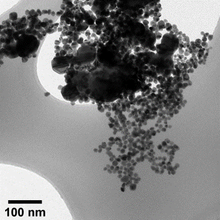
Nanomaterials have gained importance in various fields due to their unique properties such as enhanced surface area, optical and electrical properties, improved thermal stability, and biocompatibility, which are different from those of bulk materials and micro-scale particles. These unique properties of nanomaterials have led to their widespread use in energy generation, sensing, catalysis and health care applications.
Nanoparticle synthesis from plasma-liquid interaction has gained its significance in a recent decade. Nanoparticle synthesis through plasma-liquid interaction involves the generation of plasma in a liquid medium and the subsequent reaction with precursors in the liquid to form nanoparticles. Plasma-liquid interaction can offer several advantages over traditional nanoparticle synthesis methods, such as improved reaction efficiency and the ability to synthesize nanoparticles without additional chemical compounds (stabilizer/surfactant). This allows to reduce toxicity and the formation of environmentally harmful byproducts. The materials that can be synthesized by plasma-liquid interaction are as follow: metals such as gold and silver nanoparticles; semiconductor materials such as silicon and zinc oxide used for applications in electronics and energy; and oxides such as titanium, dioxide and alumina which are useful for applications in catalysis and environmental remediation.
With the growing importance of plasma-liquid interaction for nanomaterial synthesis, significant progress has been made within key topics: understanding of formation and growth of nanoparticles; development of new sources to be implemented for plasma-liquid interaction such as micro or nano-second plasma and dielectric barrier discharge (DBD); synthesis of new and improved materials; and integration of other methods with plasma-liquid interaction such as surface modification. The continued progress in plasma-liquid interaction for nanomaterial synthesis is expected to lead to new and innovative applications.
Further readings:

